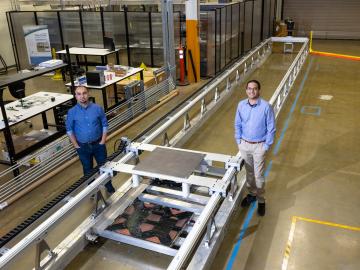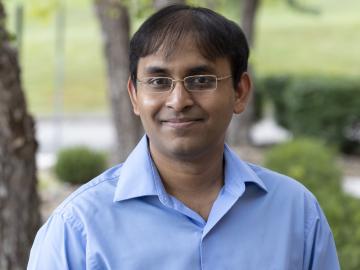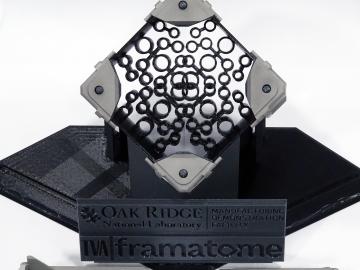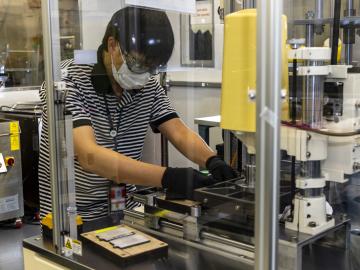
Filter News
Area of Research
- (-) Energy Science (38)
- (-) National Security (12)
- (-) Neutron Science (9)
- Biology and Environment (25)
- Biology and Soft Matter (1)
- Computational Biology (1)
- Electricity and Smart Grid (1)
- Fusion and Fission (6)
- Materials (18)
- Materials for Computing (3)
- Nuclear Science and Technology (4)
- Supercomputing (51)
News Topics
- (-) Advanced Reactors (2)
- (-) Artificial Intelligence (12)
- (-) Big Data (5)
- (-) Chemical Sciences (5)
- (-) Clean Water (5)
- (-) Grid (16)
- (-) Summit (4)
- (-) Transportation (17)
- 3-D Printing/Advanced Manufacturing (25)
- Bioenergy (14)
- Biology (9)
- Biomedical (11)
- Biotechnology (2)
- Buildings (11)
- Composites (2)
- Computer Science (21)
- Coronavirus (11)
- Cybersecurity (13)
- Energy Storage (21)
- Environment (24)
- Fossil Energy (2)
- High-Performance Computing (6)
- Hydropower (1)
- Machine Learning (11)
- Materials (10)
- Materials Science (12)
- Mathematics (2)
- Mercury (1)
- Microelectronics (1)
- Microscopy (3)
- Nanotechnology (5)
- National Security (24)
- Neutron Science (55)
- Nuclear Energy (5)
- Partnerships (5)
- Physics (1)
- Polymers (2)
- Quantum Computing (1)
- Quantum Science (3)
- Security (8)
- Simulation (1)
- Space Exploration (2)
Media Contacts

Consumer buy-in is key to the future of a decarbonized transportation sector in which electric vehicles largely replace today’s conventionally fueled cars and trucks.

Deborah Frincke, one of the nation’s preeminent computer scientists and cybersecurity experts, serves as associate laboratory director of ORNL’s National Security Science Directorate. Credit: Carlos Jones/ORNL, U.S. Dept. of Energy

At the Department of Energy’s Oak Ridge National Laboratory, scientists use artificial intelligence, or AI, to accelerate the discovery and development of materials for energy and information technologies.

Through a consortium of Department of Energy national laboratories, ORNL scientists are applying their expertise to provide solutions that enable the commercialization of emission-free hydrogen fuel cell technology for heavy-duty

As ORNL’s fuel properties technical lead for the U.S. Department of Energy’s Co-Optimization of Fuel and Engines, or Co-Optima, initiative, Jim Szybist has been on a quest for the past few years to identify the most significant indicators for predicting how a fuel will perform in engines designed for light-duty vehicles such as passenger cars and pickup trucks.

Planning for a digitized, sustainable smart power grid is a challenge to which Suman Debnath is using not only his own applied mathematics expertise, but also the wider communal knowledge made possible by his revival of a local chapter of the IEEE professional society.

The Transformational Challenge Reactor, or TCR, a microreactor built using 3D printing and other new advanced technologies, could be operational by 2024.

Soteria Battery Innovation Group has exclusively licensed and optioned a technology developed by Oak Ridge National Laboratory designed to eliminate thermal runaway in lithium ion batteries due to mechanical damage.

Scientists at Oak Ridge National Laboratory used new techniques to create a composite that increases the electrical current capacity of copper wires, providing a new material that can be scaled for use in ultra-efficient, power-dense electric vehicle traction motors.

ORNL researchers have developed an intelligent power electronic inverter platform that can connect locally sited energy resources such as solar panels, energy storage and electric vehicles and smoothly interact with the utility power grid.


